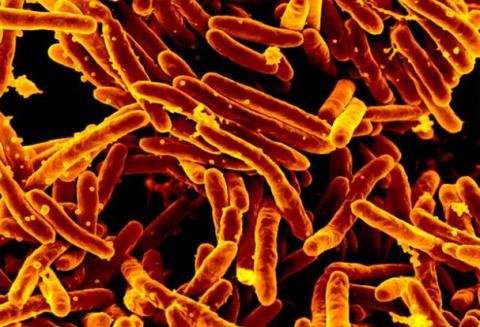Getting a step ahead of tuberculosis' drug resistance evolution

In the face of natural selection, genetic mutations set some individuals up for success. A single change to the sequence of a gene can give an organism an advantage—and if that mutation is passed to future generations, it may shape the fate of the species.
Now, scientists have determined that evolutionary adaptation is steered in part by an imbalance in the types of mutations that tend to crop up in genomes most often. For a variety of reasons, certain letters or segments of the genetic code are more prone to mutation than others. Understanding the impact of this mutational bias could help scientists predict how pathogens and cancer cells are most likely to evolve resistance to the drugs used to treat them. That, in turn, will aid the design of new drugs and treatment strategies.
Cold Spring Harbor Laboratory Assistant Professor David McCandlish, who led a study with collaborator Joshua Payne at the Swiss Institute of Bioinformatics, points out that there is often more than one genetic solution to a problem. In the case of bacteria exposed to an antibiotic, for example, dozens of different mutations can confer an ability to resist the drug. But certain paths to resistance are more common than others. Hundreds of different drug-resistance mutations have been found in tuberculosis (TB) bacteria isolated from patients, McCandlish says, but some of these are 100 times more common than others.
McCandlish and his colleagues analyzed thousands of adaptive changes found in three different microorganisms, including bacteria that cause tuberculosis. The researchers determined that the types of genetic changes that accumulated during adaptive evolution, both in natural and laboratory settings, are indeed the classes of mutations that occur most frequently. They reported these findings in the Proceedings of the National Academy of Sciences, noting several factors that influence how closely the adaptive changes found in a population mirror the spectrum of mutations in that species.
The relationship was strongest, McCandlish says, when populations experienced few beneficial mutations per generation. He explains:
"If that number is low, it means that the population is really just waiting for any mutation that can get the job done. And if the number is high, what it means is that probably there are going to be several different mutations that can solve this problem, and the one that we're going to see at the end of the process is just the one that solves it best."
More information: Alejandro V. Cano et al, Mutation bias shapes the spectrum of adaptive substitutions, Proceedings of the National Academy of Sciences (2022). DOI: 10.1073/pnas.2119720119
Journal information: Proceedings of the National Academy of Sciences
Provided by Cold Spring Harbor Laboratory


















